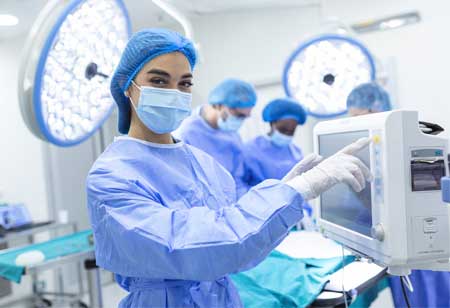Streamlining Cosmetic Surgery Outcomes with 3D Technology
Plastic surgery is a medical specialty that repairs, reconstructs, and beautifies abnormalities and deformities in human tissues and organs.

By
Medical Care Review | Monday, April 01, 2024
Stay on top of your health and well-being with exclusive feature stories on the top medical clinics and treatment centers, expert insights and the latest news delivered straight to your inbox. Subscribe today.
As 3D bioprinting research advances, greater emphasis is being placed on technologies such as print size, cell activity, and bio-ink viscosity.
FREMONT, CA: Plastic surgery is a medical specialty that repairs, reconstructs, and beautifies abnormalities and deformities in human tissues and organs using surgical treatments or tissue transplantation. Three-dimensional (3D) bioprinting has gained popularity since it allows for detailed customization of implants in the patient's surgical region before surgery while avoiding some unpleasant responses and difficulties associated with traditional surgical techniques. 3D bioprinting technology enables the creation of customized grafts for each patient's needs, leading to greater accuracy and fit. As a result, it significantly reduces plastic surgery's complexity, risk, and time. With the advancement of three-dimensional (3D) bioprinting technology, new types of bio-inks and printing procedures have arisen, allowing for the creation of individualized grafts. Implants created using biomaterials and printed from the patient's seed cells are more biocompatible and have lower immunogenicity than standard biomaterials. Furthermore, surgical problems such as discomfort and inflammation produced by donor region surgical manipulation may be avoided through autologous transplantation. Furthermore, newer printing technologies such as intraoperative bioprinting have introduced fresh concepts for plastic surgery clinical practice.
3D bioprinting products must be as intricate and detailed as human tissues and organs and have multi-biological functioning. Furthermore, the form and function of various organs and tissues in the human body differ greatly. As a result, numerous 3D bioprinting technologies have evolved to suit printing complex, high-precision structures capable of simulating diverse tissues and organs.
Depending on the printing requirements, inkjet-based bioprinting technology may produce large quantities of nano- and micron-sized ink droplets. Furthermore, because most contemporary bio-inks are created from hydrogels, such a droplet-like printing process may assure high-resolution printing on a predetermined region.
Experiments often employ thermal or piezoelectric devices to momentarily form the inkjet head to govern the spraying of various-sized droplets; they expel the ink through air pressure or electrical pulses. Furthermore, piezoelectric-powered bioprinters have greater cell bio-vitality than standard thermal bioprinters that spray ink. Droplet sizes and print speeds in inkjet-based bioprinting technology are determined by the fluid characteristics of the ink, nozzle diameters, and print head deformation frequencies. This method also offers the advantages of quick printing, low cost, and powerful simulation. However, it has flaws such as nozzle clogging, restricted ink viscosity, inconsistent ink size, and inadequate sequence lines.
Constructing the structure of the printed product depend on the laser source directing the printing material to be deposited or cured through optical cross-linking. Stereo Lithography Appearance (SLA) is a projection printing technology that employs ultraviolet or visible light to cure photosensitive ink in a specific region and then photopolymerizes the desired model layer by layer. This approach reduces the harmful effects of shear stress on bio-inks produced using nozzle printing technologies while allowing for quick and precise printing.
Extrusion-based bioprinting uses mechanical force generated by a compressed air system and mechanical pistons to print biological materials. A bio-ink or biomaterial ink is specifically deposited on medical-grade disposable syringes.
The mechanical force created through pressure or the dispensing device squeezes the ink onto the sterile substance. The coordinated motion of the print head in conjunction with the substrate along all three axes throughout the printing process allows for high-precision deposition of various materials. This enables the construction of large-scale sophisticated 3D biological structures. Extrusion-based bioprinting is favored because it is scalable, easy to use, and has great adaptability due to a diverse library of biomaterials.







